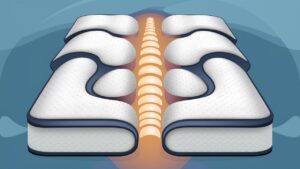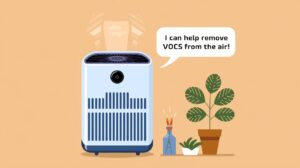To eliminate bed bugs, start by thoroughly cleaning all bedding and infested areas. Use professional pest control methods for effective results.
Bed bugs are small, elusive pests that can disrupt your peace and comfort. They hide in cracks, crevices, and bedding, making them hard to spot. Once established, they reproduce quickly and can infest your home in no time. Understanding how to identify and eliminate bed bugs is crucial for regaining control.
This guide provides practical steps for effective bed bug removal, from initial detection to long-term prevention strategies. By following these tips, you can create a bed bug-free environment and protect your home from future infestations. Stay informed to ensure your living space remains safe and comfortable.
The Bed Bug Menace
Bed bugs are small, blood-sucking pests. They invade homes and cause discomfort. Understanding their behavior is essential for effective elimination. This guide will help you identify and combat this growing threat.
Identifying The Enemy: Recognizing Bed Bugs
Bed bugs are tiny, about the size of an apple seed. They have flat, oval bodies and are reddish-brown. Here’s how to recognize them:
- Color: Reddish-brown, turning darker after feeding.
- Shape: Oval and flat before feeding.
- Size: Adults are about 1/4 inch long.
Look for signs of bed bugs in these areas:
- Mattresses and bed frames.
- Cracks in walls or furniture.
- Behind baseboards or electrical outlets.
Check for tiny dark spots. These spots are bed bug droppings.
The Risks: Health And Home
Bed bugs pose significant health risks. Their bites can cause red, itchy welts. Some people may have severe allergic reactions.
Here are the main risks:
| Risk | Description |
|---|---|
| Allergic Reactions | Swelling and redness from bites can be painful. |
| Infection | Scratching bites can lead to skin infections. |
| Sleep Disturbance | Bed bugs can cause anxiety and sleepless nights. |
Bed bugs also damage your home. They can infest beds, couches, and carpets. Removing them can be costly and time-consuming.
Early Detection Tactics
Detecting bed bugs early can save time and money. Knowing the signs of an infestation is crucial. Quick action can prevent a larger problem.
Signs Of Infestation: What To Look For
Bed bugs are small but leave noticeable signs. Here are key indicators:
- Red spots on bedding or furniture.
- Live bugs near your bed or furniture.
- Eggs or shed skins in crevices.
- Musty odor in infested areas.
Check these signs regularly. Early detection makes treatment easier.
Home Inspection: Searching For Bed Bugs
Inspect your home thoroughly. Use these steps for an effective search:
- Check the mattress and box spring.
- Look under the bed and behind headboards.
- Inspect furniture joints and seams.
- Examine carpets and rugs.
- Look in closets and drawers.
Use a flashlight for better visibility. Pay attention to dark areas.
Cultural Control Methods
Cultural control methods focus on changing habits. They help reduce bed bug populations. Simple practices can make a big difference.
Cleanliness Is Key: Reducing Clutter
Clutter provides hiding spots for bed bugs. Reducing clutter makes it easier to spot them. Follow these steps:
- Clear out unused items.
- Store clothes in sealed containers.
- Organize books and papers.
- Keep floors and surfaces clean.
Regular cleaning helps spot bed bugs early. It also makes your space more inviting.
Regular Washing: Bedding And Clothing
Wash bedding and clothing often. Heat kills bed bugs. Follow these tips:
- Wash sheets and pillowcases weekly.
- Use hot water (at least 120°F).
- Dry on high heat for 30 minutes.
- Store clean items in sealed bags.
Regular washing reduces bed bug populations. It also maintains a healthy living space.
Physical Removal Strategies
Physical removal strategies are essential for effective bed bug elimination. These methods help reduce the pest population quickly. They do not rely on chemicals, making them safer for you and your family.
Vacuuming: A First Line Of Defense
Vacuuming is one of the easiest ways to tackle bed bugs. It helps eliminate bugs and their eggs from surfaces.
- Use a vacuum with a HEPA filter.
- Focus on areas like:
- Mattresses
- Bed frames
- Carpets
- Baseboards
- Seal the vacuum bag tightly after use.
Vacuuming alone may not solve the problem. Repeat this process regularly.
Steam Cleaning: Turning Up The Heat
Steam cleaning is a powerful method for bed bug removal. High temperatures kill bed bugs and their eggs effectively.
| Temperature | Effectiveness |
|---|---|
| 120°F (49°C) | Kills bugs on contact |
| 180°F (82°C) | Eliminates eggs and adults |
Follow these steps for effective steam cleaning:
- Use a steam cleaner designed for bed bugs.
- Target seams and folds in mattresses.
- Steam clean furniture and carpets.
- Allow surfaces to dry completely.
Steam cleaning should complement other removal methods for the best results.
Chemical Warfare
Bed bug elimination often requires powerful tools. Chemical insecticides can effectively reduce infestations. Choosing the right products is crucial for success.
Choosing The Right Insecticides
Not all insecticides work the same way. Here are some types to consider:
- Pyrethroids: Common and effective against bed bugs.
- Neonicotinoids: Disrupt the nervous system of insects.
- Insect Growth Regulators (IGRs): Prevent bed bugs from maturing.
- Desiccants: Dry out bed bugs, leading to death.
Check labels for effectiveness against bed bugs. Always select products approved by regulatory agencies.
Application Tips: Safety First
Safety is vital during chemical application. Follow these tips:
- Wear gloves and a mask.
- Keep children and pets away from treated areas.
- Ventilate rooms during and after application.
- Follow the manufacturer’s instructions carefully.
Store insecticides in a safe place. Dispose of any unused chemicals properly.

Natural And Non-toxic Solutions
Eliminating bed bugs doesn’t have to involve harsh chemicals. Natural and non-toxic solutions offer effective ways to tackle infestations. These methods are safe for your family and pets. They are also gentle on the environment.
Diatomaceous Earth: A Natural Pesticide
Diatomaceous earth is a powder made from tiny fossilized algae. It acts as a natural pesticide against bed bugs. Here’s how it works:
- It dehydrates bed bugs by damaging their exoskeletons.
- It disrupts their ability to retain moisture.
To use diatomaceous earth effectively:
- Sprinkle a thin layer in areas where bed bugs hide.
- Focus on cracks, crevices, and under furniture.
- Leave it for at least a week.
- Vacuum it up to remove dead bugs and residue.
Always wear a mask when applying it. This prevents inhaling fine particles.
Essential Oils: Nature’s Repellent
Essential oils are natural repellents against bed bugs. They contain compounds that deter these pests. Some effective options include:
| Essential Oil | Effectiveness |
|---|---|
| Tea Tree Oil | Known for its antibacterial properties |
| Lavender Oil | Repels bed bugs with its strong scent |
| Peppermint Oil | Creates an inhospitable environment |
To use essential oils:
- Mix 15-20 drops with water in a spray bottle.
- Spray around beds, furniture, and baseboards.
- Reapply weekly for best results.
Ensure to test on a small area first. This prevents any damage to surfaces.
Professional Extermination Services
Bed bugs can be a nightmare. They hide in small spaces and multiply quickly. Professional extermination services help eliminate these pests effectively. Experts use proven methods to ensure your home is bed bug-free.
When To Call The Pros
Recognizing a bed bug infestation is vital. Look for these signs:
- Small, dark spots on sheets or mattresses
- Red, itchy bite marks on your skin
- Presence of bed bug eggs or shed skins
- Unpleasant, musty odor in your bedroom
Contact professionals in these situations:
- Multiple sightings of bed bugs
- Recurring bites after treatment
- Difficulty finding their hiding spots
- Large infestations in multiple rooms
What To Expect From A Professional Treatment
Understanding the treatment process can ease your worries. Here’s what to expect:
| Step | Description |
|---|---|
| Inspection | Experts assess the extent of the infestation. |
| Treatment Plan | A customized plan is created for your home. |
| Application | Professionals apply safe and effective treatments. |
| Follow-Up | Additional visits ensure complete elimination. |
Expect a thorough service. Professionals use specialized equipment. They ensure your safety and comfort during treatments. You’ll receive guidance on how to prepare your home.
Preventative Measures
Preventing bed bugs is easier than eliminating them. Small steps can help keep your home safe. Use these strategies to avoid infestations.
Protective Covers: Mattresses And Pillows
Invest in protective covers for your mattresses and pillows. These covers act as a barrier against bed bugs. Here are some benefits:
- Seals in existing bugs.
- Prevents new bugs from entering.
- Easy to clean and maintain.
Choose covers that are:
- Zippered for full protection.
- Waterproof to guard against spills.
- Durable to withstand wear and tear.
Maintaining A Bed Bug-free Environment
Keeping your home clean helps prevent bed bugs. Follow these simple practices:
- Vacuum regularly, especially in bedrooms.
- Wash bedding in hot water weekly.
- Declutter your space to reduce hiding spots.
Check for signs of bed bugs during these activities:
| Activity | Signs to Look For |
|---|---|
| Vacuuming | Small dark spots or shed skins |
| Washing Bedding | Live bugs or blood stains |
| Decluttering | Eggs or tiny black dots |
Act quickly if you find any signs. Early detection can save you from a serious problem.
Monitoring And Maintenance
Effective bed bug elimination requires constant vigilance. Monitoring and maintenance play crucial roles in keeping your home bed bug-free. Regular checks and long-term strategies can help you stay ahead of these pests.
Regular Checks: Keeping Vigilant
Regular inspections are vital. Check your home for signs of bed bugs:
- Look for dark spots on sheets or mattresses.
- Inspect seams of mattresses and box springs.
- Examine furniture joints and cracks.
- Check behind baseboards and electrical outlets.
Conduct these checks every month. Use a flashlight for better visibility. Early detection can save you time and money.
Long-term Strategies: Ensuring They Don’t Return
Implement these strategies for lasting protection:
- Seal cracks and crevices. Prevent bed bugs from entering.
- Use mattress encasements. Protect mattresses from infestations.
- Keep clutter to a minimum. Less clutter means fewer hiding spots.
- Wash bedding regularly. Hot water can kill bed bugs.
- Vacuum frequently. Dispose of vacuum bags immediately.
Consider professional inspections every six months. Experts can find hidden infestations. Stay informed about bed bug trends. Knowledge helps you maintain a bed bug-free environment.
Legal Aspects And Tenant Rights
Bed bugs can create serious problems for tenants. Knowing your legal rights is essential. Understanding landlord responsibilities helps ensure swift action. This section covers tenant rights and landlord duties regarding bed bug infestations.
Understanding Your Rights
As a tenant, you have certain rights. These rights protect you from infestations. Here are some key points:
- Right to a Habitable Home: You deserve a safe living environment.
- Right to Report: You can report any pest issues to your landlord.
- Right to Privacy: Your landlord cannot enter without notice.
- Right to Remediation: You should receive timely treatment for bed bugs.
Navigating Landlord Responsibilities
Landlords have specific duties regarding pest control. They must act quickly to resolve infestations. Here’s what you need to know:
| Landlord Responsibility | Description |
|---|---|
| Inspection | Landlords must inspect units promptly after reports. |
| Treatment | Landlords must hire professionals for pest control. |
| Notification | Landlords must inform tenants about treatment schedules. |
| Prevention | Landlords should take steps to prevent future infestations. |
Document all communications with your landlord. Keep records of pest reports and treatments. This documentation will support your case if issues arise.
Frequently Asked Questions
How Can I Identify Bed Bug Infestations?
Look for small, reddish-brown insects, about the size of an apple seed. Check mattress seams, bed frames, and furniture crevices. You may also notice tiny dark spots, which are bed bug excrement. If you find these signs, it’s crucial to act quickly to prevent further infestation.
What Are Effective Bed Bug Treatment Methods?
Effective treatments include heat, cold, and chemical solutions. Heat treatments involve raising temperatures to eliminate bugs. Cold treatments freeze them at low temperatures. Chemical sprays can also be applied but should be used cautiously. Always consult a pest control professional for the best approach.
How Can I Prevent Bed Bugs In My Home?
To prevent bed bugs, regularly inspect bedding and furniture. Use protective covers for mattresses and box springs. Avoid bringing used furniture into your home without thorough checks. Keep clutter to a minimum, making it harder for bed bugs to hide.
Regular cleaning can also deter infestations.
Do Bed Bugs Bite And Are They Harmful?
Yes, bed bugs bite and can cause itchy welts. However, they do not transmit diseases. Most reactions to bites are allergic and can vary from person to person. Treating the bites with over-the-counter remedies can alleviate discomfort. If symptoms persist, consult a healthcare provider.
Conclusion
Effective bed bug elimination requires a strategic approach. By identifying the infestation early, using proper treatments, and maintaining cleanliness, you can reclaim your space. Remember to monitor regularly to prevent future issues. With diligence and the right methods, you can ensure a bed bug-free environment for you and your family.








